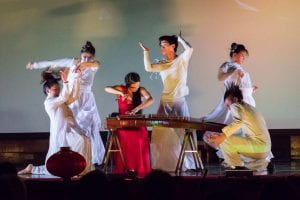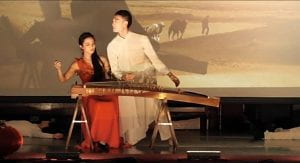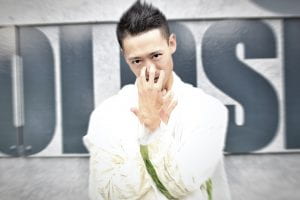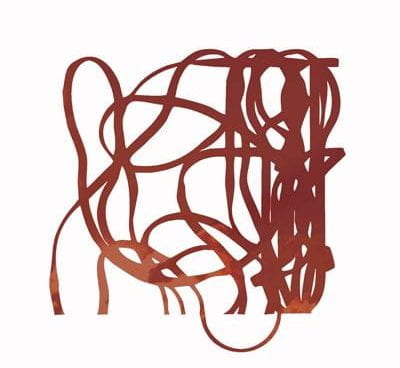
Hello everyone!
My name is Ma Jiaolong and I currently oversee Chinese classical and Chinese sword dance short courses here at Goldsmiths Confucius Institute. I also help to further understanding of these art forms through departmental performances and an important focus of my work involves choreographing and creating new performance pieces for some of the department’s annual projects.
Since working here, I have created several works and performed in an exciting variety of external performances. This has proven to be a great way of imparting further knowledge of Chinese performing arts to the local community and has also been a unique experience for me. I would like to take this opportunity to share with you a creative experience that still particularly sticks out in my mind, namely the process of creating an original performance piece entitled The Walker.
The Walker involved a total of seven staff members from the department, including myself. Among them were He Yun (a talented player of the traditional Chinese stringed instrument, the guzheng) as well as three great female dancers, Liu Yiwei, Dai Yun and Gao Jiaying and two fine martial arts performers, Zeng Fu and Huang Hongquan. Although many of those staff members have now left the department, I look back fondly at our time performing together and feel thankful for the opportunity of working together with them.
The creative process for the project originated from a particular guzheng music piece that He Yun had been practicing. From the first time I heard it, I was really moved by the music and immediately thought of using it as a basis for a new creative project.
I kept the guzheng centre-stage and had the other performers move around it, so that it remained the focal point of the piece. Here the guzheng and the music which erupts from it is positioned as a central place; metaphorically it becomes a place and state of being that each performer strives to reach, a sort of pilgrimage site.
Individual body movements by each performer were designed to show how they have each traveled over the years, what they have encountered, how they have met and even how life eventually has to come to an end. Like a leaf falling from a tree, eventually we all fall back to our roots; each person is but a simple walker or passenger in their own lives.

He Yun was required to provide live accompaniment for every rehearsal. In order to be able to perfectly integrate the music with the dance, I altered aspects of her music a lot each time, which was rather a challenge as it meant she had to play the piece over and over again.
Sometimes, the dancer’s movements would also need to be altered and she would have to play the music from the start yet again. Her fingers soon became very painful, but she never gave up. At that time we could have used a pre-recorded accompaniment, but she refused that option as she believed going through this process together with everyone meant she would be able to breathe with the performers, to feel their movements with the music, to accomplish our goal and move forward together on such a journey.
The three female dancers Liu Yiwei, Dai Yun and Gao Jiaying played a very important role in this work. The psychological feelings expressed by each of their movements helped to inspire me with more ideas when I was choreographing. They enabled me to engage with different feelings and opinions and greatly enhanced the overall expressive power of the work.
Zeng Fu and Huang Hongquan were the two final martial art performers of the piece. As martial arts performers, being given an introduction to Asian Contemporary dance was a learning curve for them. They never missed a rehearsal and approached the beginning of each day with laughter and energy. They were unfamiliar with such movements, but after my demonstration and explanations would begin to imitate me.
After impromptu training sessions with everyone, they found the feeling of the dance in their own bodies and through their own efforts and everyone’s support were able to make the movements their own, leaving imitation behind and using bodily movements to express their own emotions. In essence, becoming great dancers.
This piece could not have been achieved with any performers missing; each played a vital role in the composition and creative and emotional effect of the work. When performers work towards a common goal without giving up, the journey will be full of meaning; the same is true of life.
After this work was performed, it was really well received by many audiences and we had a lot of positive feedback from audiences here in Lewisham, across the UK and Europe. There were even some critical interpretations of the piece that had never even crossed my mind during the creative process. This also made me learn a lot and understand more about how foreign audiences can interpret works in different ways and has given me greater motivation to take on challenges in my future creations.
You can watch a clip of The Walker here, which was featured as part of Goldsmith’s Confucius Institute 2019 Chinese New Year celebrations.

Jiaolong Ma is one of China’s most acclaimed Chinese classical dancers. He has excelled in a wide range of dance categories, coming in first place at the Hehua Dance Competition 2015 and third place at the Tao Li Bei Dance Competitions of 2006 and 2009. He is a skilled performer and teacher of Chinese classical dance, contemporary dance, the Shen Yun dance technique and tai chi. Jiaolong currently oversees our Chinese classical and Chinese sword dance short courses and is an instrumental part of our departmental Outreach Programme.
